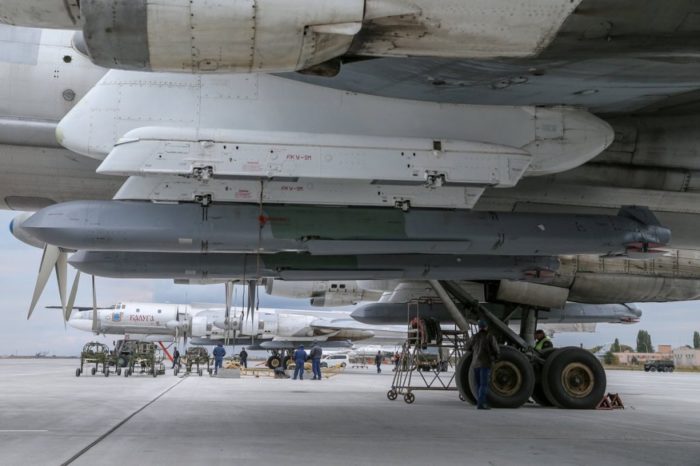
Russia is expanding its missile reserves, increasing drone production, and modifying drone technologies as part of a long-term military strategy to achieve its war objectives in Ukraine, according to the Institute for the Study of War (ISW) on 26 May. These developments signal Russia’s full commitment to securing victory through military means in a protracted conflict, according to the think tank.
The assessment follows a week of intensified Russian combined drone and missile attacks on Ukrainian cities amid the ongoing Russo-Ukrainian war. While the US has reportedly been advocating for a ceasefire and renewed Kyiv-Moscow negotiations to end the Russian invasion, Moscow remains committed to its original maximalist objectives—amounting to Ukraine’s full capitulation—and continues to show no interest in any form of ceasefire.
ISW stated that Russia’s growing stockpile of ballistic missiles, rising drone output, and ongoing drone adaptations demonstrate a sustained effort to strengthen its strike capabilities. The Economist, citing Ukrainian government sources on 25 May, reported that Russia has accumulated around 500 ballistic missiles. At the same time, Moscow is reportedly producing about 100 Shahed explosive drones per day — roughly four to five times the daily output estimated in late 2024.
Ukrainian military intelligence told The Economist that Russia intends to increase this drone production to 500 units per day, although no specific deadline was mentioned. Engineers in Ukraine noted that Russian forces are actively modifying Shahed drones to overcome Ukrainian electronic warfare systems. These upgrades include the use of artificial intelligence and integration with Ukrainian internet and mobile networks for improved navigation.
Following a record 355-drone attack, Russia launches 60 drones—Ukraine intercepts most
New Shahed tactics
A Ukrainian officer interviewed by The Economist stated that Russian drones are flying at altitudes of 2,000 to 2,500 meters, beyond the effective range of small arms and shoulder-fired missiles used by Ukrainian mobile air defense units. On 25 May, Lieutenant Andriy Kovalenko, Head of Ukraine’s Center for Countering Disinformation, reported that Russian forces had set a new altitude record with a Shahed drone flight reaching 4,900 meters.
Colonel Yurii Ihnat, spokesperson for Ukraine’s Air Force, confirmed on 26 May that Russia is producing both Shahed and decoy drones in higher numbers and deploying them at higher altitudes. Ihnat also noted that Russian forces resumed the use of Kh-22 cruise missiles after a period of reduced deployment. According to ISW, the resurgence of large-scale missile and drone strike packages aligns with Russia’s broader strategy of enhancing its domestic weapons production and long-term war preparations.
ISW: Russia ramps up missile strikes and propaganda in bid to crush Ukrainian morale and Western will
Russia’s goals unchanged, but it economy struggles
Ukraine’s Foreign Intelligence Service Chief Oleh Ivashchenko said in a 26 May Ukrinform interview that Russia’s goal of full control over Luhansk, Donetsk, Zaporizhzhia, and Kherson oblasts remains unchanged. He warned that Russia is also preparing for a future conflict with NATO, in line with ISW’s assessments.
“ISW also continues to assess that the Russian government and military are preparing for a possible future conflict with NATO. Russian authorities recently renewed their years-long narrative rejecting the legality of the dissolution of the Soviet Union in 1991, likely to set conditions for Russia to deny the independence and sovereignty of other former Soviet states in the future,” the think tank wrote.
WP: Trump softens on Putin as Russian battlefield edge declines
Ivashchenko noted Russia’s economic struggles, with its sovereign wealth fund reduced to $38 billion from $150 billion pre-invasion, and highlighted reliance on Soviet-era equipment. He stated that foreign aid from North Korea, China, and Belarus is playing a growing role in Russia’s defense industry.
“Russia’s efforts to increase domestic drone and missile production and ongoing adaptations of these strike packages are likely part of a broader Russian effort to prepare for a protracted war in Ukraine and possibly a future war with NATO,” ISW wrote.
You could close this page. Or you could join our community and help us produce more materials like this.
We keep our reporting open and accessible to everyone because we believe in the power of free information. This is why our small, cost-effective team depends on the support of readers like you to bring deliver timely news, quality analysis, and on-the-ground reports about Russia's war against Ukraine and Ukraine's struggle to build a democratic society.
A little bit goes a long way: for as little as the cost of one cup of coffee a month, you can help build bridges between Ukraine and the rest of the world, plus become a co-creator and vote for topics we should cover next.
Become a patron or see other ways to
support.
Become a Patron!

